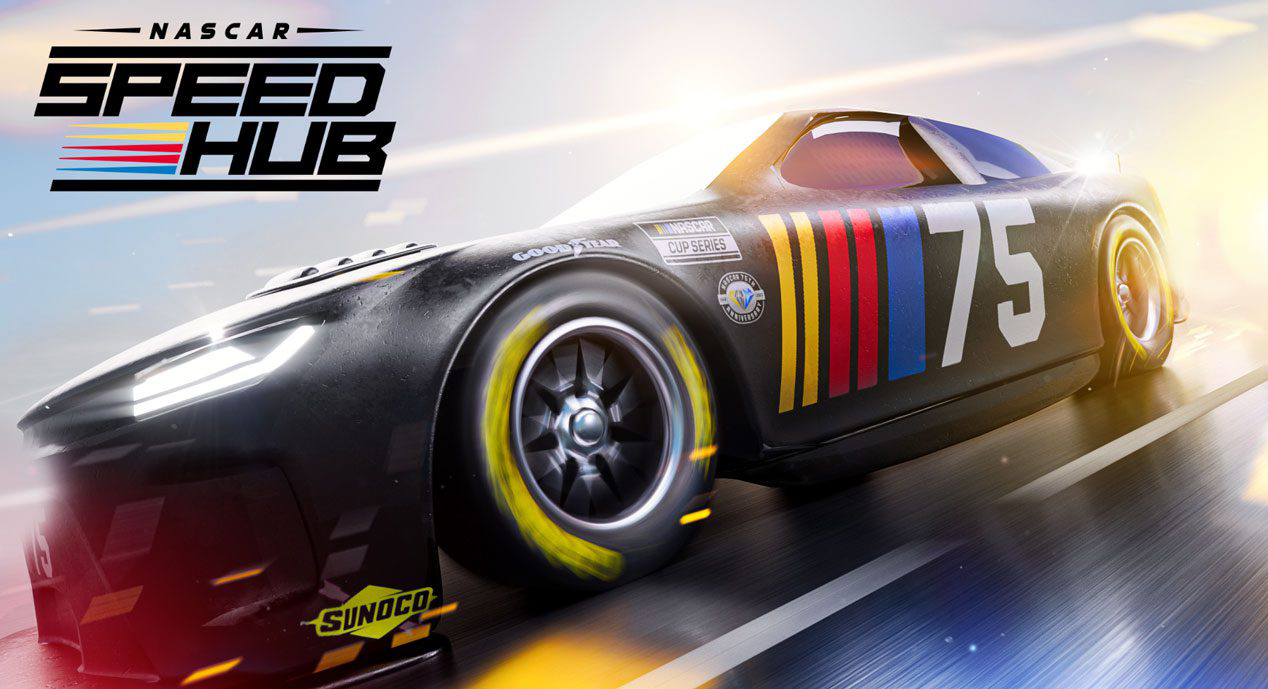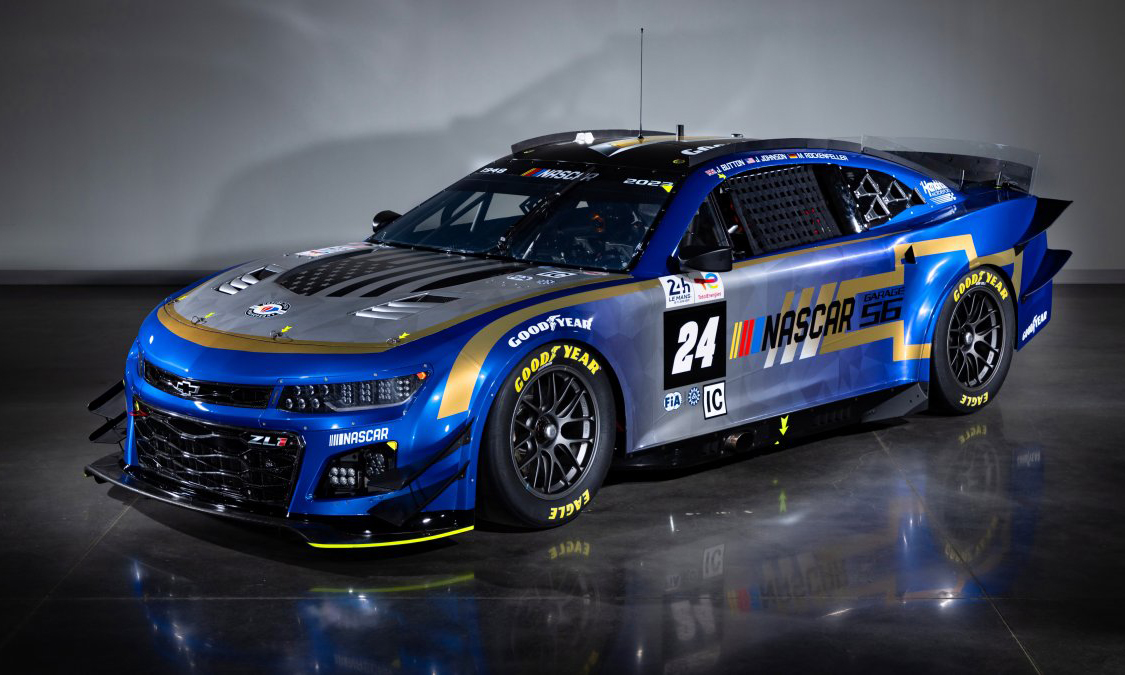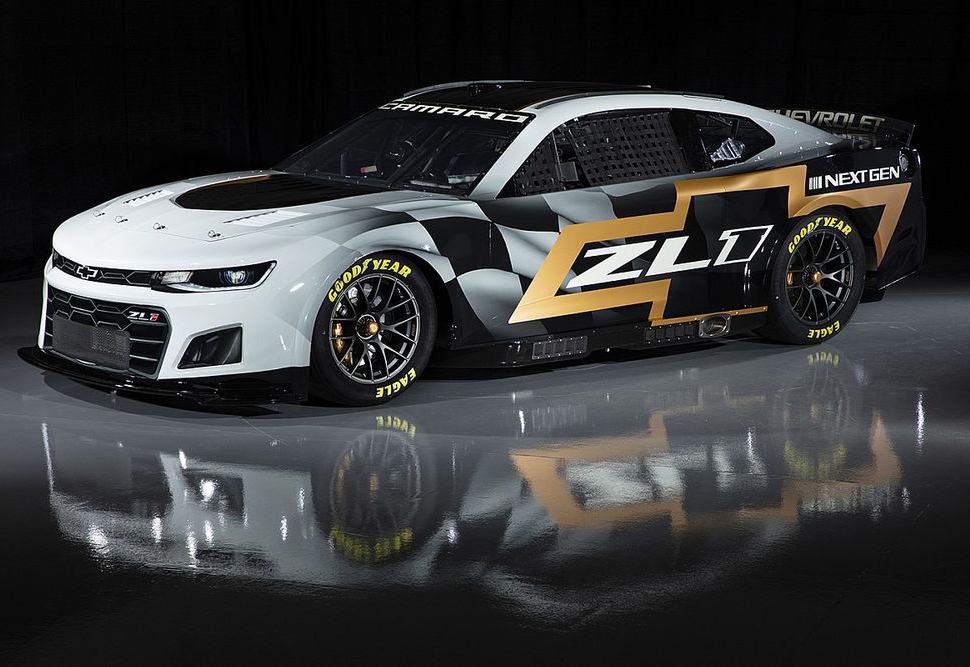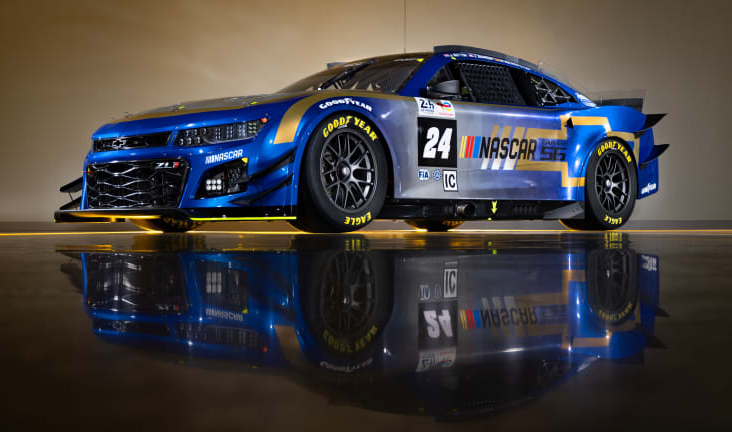NASCAR Where Speed and Passion Collide.
The roar of engines, the smell of burnt rubber, and the thrill of speed – these are the elements that define the heart-pounding world of NASCAR. National Association for Stock Car Auto Racing, or NASCAR, is more than just a sport; it’s a culture, a way of life, and a celebration of horsepower. In this blog post, we’ll dive into the exhilarating world of NASCAR, exploring its history, iconic moments, and the unwavering passion that fuels both drivers and fans.
A Need for Speed: The Origins of NASCAR
NASCAR traces its roots back to the post-World War II era in the Southern United States. During this time, moonshine runners – individuals who illegally transported homemade whiskey – began modifying their vehicles to evade law enforcement. These modifications inadvertently led to the birth of stock car racing, as drivers showcased their driving skills on makeshift tracks.
Racing Takes the Green Flag: NASCAR’s Evolution
As the demand for organized racing grew, NASCAR was officially founded in 1948 by Bill France Sr. The organization aimed to create a standardized platform for competitive racing while maintaining the spirit of the sport. From dirt tracks to modern-day super-speedways, NASCAR has evolved into a premier motorsport that captivates millions of fans worldwide.
The Power of the Daytona 500: NASCAR’s Crown Jewel
The Daytona 500, often dubbed “The Great American Race,” is NASCAR’s most prestigious event. Held at the Daytona International Speedway, this race serves as the season opener and sets the tone for the year ahead. Victory in the Daytona 500 is a career-defining achievement, making legends out of drivers who conquer its challenging oval.

Icons of the Oval: Legendary Drivers
NASCAR has produced a pantheon of legendary drivers who’ve left their tire marks on the sport’s history:
- Richard Petty: Known as “The King,” Richard Petty is a seven-time NASCAR champion and a beloved figure in the racing community.
- Dale Earnhardt: “The Intimidator,” Dale Earnhardt Sr., captured the hearts of fans with his aggressive driving style and iconic black No. 3 car.
- Jeff Gordon: A charismatic driver, Jeff Gordon’s prowess on the track and his appeal off it helped expand NASCAR’s fan base.
Speed, Strategy, and Superspeedways: NASCAR Today
Today, NASCAR features a diverse range of tracks, from short tracks requiring precision to superspeedways where drivers reach mind-bending speeds. Races vary in length, with some lasting a few hundred miles and others stretching over 600 miles, such as the grueling Coca-Cola 600.
Chasing the Championship: The Playoffs
NASCAR’s championship format underwent a significant change with the introduction of the NASCAR Playoffs. Modeled after other major sports’ playoff systems, the Playoffs add drama and excitement to the final races of the season. Drivers accumulate points throughout the year, and the playoffs narrow down the field to determine the ultimate champion.
Fan Frenzy: The NASCAR Nation
NASCAR fans, often referred to as the “NASCAR Nation,” are an integral part of the sport’s fabric. From die-hard fans who travel across the country to catch races to families passing down their love for NASCAR through generations, the fan community is a testament to the sport’s enduring appeal.
Innovation and Adaptation: NASCAR’s Future
NASCAR continues to evolve, embracing technology, safety enhancements, and sustainability initiatives. The introduction of hybrid and electric components showcases NASCAR’s commitment to innovation while addressing environmental concerns.
Conclusion: The Checkered Flag and Beyond
NASCAR isn’t just a race; it’s a symphony of speed, strategy, and human determination. From the pioneers who raced moonshine-laden cars to the modern-day champions who tackle high-speed ovals, NASCAR remains a dynamic and captivating sport. With its iconic moments, legendary drivers, and fervent fan base, NASCAR’s journey is a testament to the timeless allure of pushing limits, overcoming challenges, and chasing the checkered flag.

Facts about:
Origins and Founding:
- NASCAR, the National Association for Stock Car Auto Racing, was founded on February 21, 1948, by Bill France Sr.
- The first official NASCAR race was held at the Charlotte Speedway in North Carolina on June 19, 1949.
- The sport’s roots can be traced back to the Prohibition era when moonshine runners modified their cars to outrun the law.
- The inaugural Strictly Stock (now Cup Series) championship was won by Red Byron in 1949.
- NASCAR’s headquarters is located in Daytona Beach, Florida.
Types of Racing:
- NASCAR primarily involves stock car racing, where modified production cars compete on oval and road courses.
- NASCAR has three major series: the Cup Series, Xfinity Series, and Camping World Truck Series.
- The Cup Series is the most prestigious, featuring high-profile races like the Daytona 500 and the Brickyard 400.
- The Xfinity Series is considered a stepping stone for drivers aspiring to compete in the Cup Series.
- The Truck Series showcases modified pickup trucks racing on various tracks.
Legendary Drivers:
- Richard Petty holds the record for most Cup Series championships with seven titles.
- Dale Earnhardt Sr., known as “The Intimidator,” won seven Cup Series championships and remains an icon in the sport.
- Jimmie Johnson won five consecutive Cup Series championships from 2006 to 2010.
- Jeff Gordon’s success helped introduce NASCAR to a wider audience during the 1990s.
- NASCAR Hall of Famer Bill Elliott was known as “Awesome Bill from Dawsonville” and won the Winston Million bonus in 1985.
Famous Tracks:
- The Daytona International Speedway hosts the prestigious Daytona 500 and has a capacity of over 100,000 spectators.
- Talladega Superspeedway in Alabama is known for its high speeds and pack racing.
- Bristol Motor Speedway is famous for its short track and close-quarters racing.
- Charlotte Motor Speedway features a unique “roval” layout combining an oval and road course.
- The Indianapolis Motor Speedway hosts the Brickyard 400 and is one of the most historic tracks in motorsports.
Safety Measures:
- NASCAR has made significant safety improvements over the years, including the introduction of the “SAFER Barrier” to absorb impact energy.
- The introduction of the “HANS Device” improved driver safety by reducing the risk of head and neck injuries.
- In 2001, Dale Earnhardt Sr.’s fatal crash prompted NASCAR to implement mandatory use of head and neck restraints.
- The “Car of Tomorrow” (COT) was introduced in 2007, featuring improved driver safety features and standardized designs.
Championship Format:
- The NASCAR Cup Series playoffs, known as the Playoffs, were introduced in 2004 to add excitement to the championship battle.
- The Playoffs consist of three rounds: Round of 16, Round of 12, and Round of 8, leading to the Championship 4 finale.
- The Championship 4 drivers compete for the title in the final race of the season.
NASCAR and Pop Culture:
- NASCAR’s popularity has led to appearances in various movies and TV shows, including “Talladega Nights” and “Days of Thunder.”
- Musicians like Toby Keith and Brad Paisley have celebrated NASCAR culture through their music.
- NASCAR video games, like the “NASCAR Heat” series, allow fans to experience the excitement of racing virtually.
NASCAR Personalities:
- Dale Earnhardt Jr., son of Dale Earnhardt Sr., is a beloved figure in the sport and continues to be involved as a broadcaster.
- Mike Helton served as NASCAR’s president from 2000 to 2015.
- NASCAR Hall of Famer Richard Petty is also known for his signature sunglasses and cowboy hat.
- Driver Kyle Busch is known for his versatile talent, winning races in all three major NASCAR series.
- FOX Sports’ Mike Joy is a well-known NASCAR broadcaster.
Record-Breaking Moments:
- Richard Petty holds the record for most wins in a single season with 27 victories in 1967.
- Jimmie Johnson won five consecutive Cup Series championships from 2006 to 2010, a record streak.
- Kyle Busch achieved the remarkable feat of winning races in all three major NASCAR series in a single weekend.
- Jeff Gordon set a record for consecutive starts with 797 races from 1992 to 2015.
- In 2020, Kevin Harvick led the most laps in a single season since the statistic was recorded.
NASCAR Technology:
- NASCAR teams use advanced simulation software to refine their setups before race weekends.
- Pit crews practice lightning-fast pit stops, with tire changes and refueling completed in a matter of seconds.
- The use of telemetry data allows teams to analyze various aspects of a car’s performance during a race.

NASCAR in the Olympics:
- NASCAR trucks were used in the opening ceremony of the 1996 Summer Olympics in Atlanta.
NASCAR on Social Media:
- NASCAR has a strong presence on social media platforms, engaging fans with behind-the-scenes content, highlights, and driver interactions.
NASCAR and Diversity:
- NASCAR has taken steps to increase diversity within the sport, including initiatives like the NASCAR Drive for Diversity program.
- Bubba Wallace is one of the prominent Black drivers in NASCAR, advocating for diversity and social change.
International Races:
- NASCAR has hosted exhibition races outside the United States, including events in Japan and Australia.
- The NASCAR Euro Series provides European drivers the opportunity to compete in stock car racing.
Sponsorship and Brands:
- Many NASCAR teams and events are sponsored by prominent brands, contributing to the sport’s financial stability.
Weather Challenges:
- Rain delays are common in NASCAR, impacting race schedules and adding unpredictability to outcomes.
NASCAR Fan Experience:
- Fans often camp at racetracks during race weekends, creating a vibrant atmosphere and sense of camaraderie.
Championship Trophies:
- The NASCAR Cup Series championship trophy is known as the Bill France Cup, named after NASCAR’s founder.
Fan Engagement:
- NASCAR fans show their loyalty by waving flags, wearing team merchandise, and creating fan clubs.
NASCAR’s Economic Impact:
- NASCAR events attract large crowds, contributing to local economies through tourism and hospitality revenue.
NASCAR Broadcasting:
- NASCAR races are broadcast on major networks, including FOX Sports and NBC Sports.
Women in NASCAR:
- Danica Patrick gained recognition as a successful female driver, breaking barriers in the male-dominated sport.
First NASCAR Race:
- The first NASCAR race at the Charlotte Speedway in 1949 was won by Jim Roper.
NASCAR Hall of Fame:
- The NASCAR Hall of Fame in Charlotte, North Carolina, honors the sport’s greatest contributors.
Short Tracks:
- Short tracks like Martinsville Speedway provide intense racing with close-quarters battles.
Longest Race:
- The Coca-Cola 600 at Charlotte Motor Speedway is NASCAR’s longest race, covering 600 miles.
NASCAR Partnerships:
- NASCAR has partnered with various companies, including Coca-Cola, Toyota, and Chevrolet.
NASCAR Engines:
- NASCAR engines are powerful, producing over 700 horsepower in Cup Series cars.
Driver Nicknames:
- NASCAR drivers often earn unique nicknames based on their driving styles and personalities.
Pit Road Strategy:
- Pit road strategy, including tire changes and fueling, can significantly impact race outcomes.
NASCAR Throwbacks:
- Some races feature “throwback” paint schemes, where cars pay tribute to iconic designs from the past.
NASCAR Championships by Manufacturer:
- Chevrolet, Ford, and Toyota are the primary manufacturers in NASCAR’s top series.
NASCAR’s Impact on Local Tracks:
- NASCAR’s popularity has influenced grassroots racing at local tracks across the country.
NASCAR on International Tracks:
- NASCAR has held exhibition races at international tracks like Suzuka Circuit in Japan.
NASCAR Fan Events:
- Fan events, such as driver autograph sessions, enhance the fan experience at racetracks.
NASCAR and Environmental Initiatives:
- NASCAR has implemented initiatives to promote environmental sustainability, including ethanol-blend fuel usage.

NASCAR Media Coverage:
- NASCAR news and updates are covered by various media outlets, including dedicated websites, podcasts, and TV shows.
NASCAR National Series Crowns:
- The NASCAR Cup Series champion is awarded the Bill France Cup, the Xfinity Series champion receives the trophy named “Big Bill,” and the Truck Series champion is awarded the championship trophy.
Road Course Racing:
- NASCAR competes on road courses, which require different driving techniques compared to oval tracks.
NASCAR’s Global Reach:
- NASCAR’s popularity extends beyond the United States, with fans around the world tuning in to watch races.
NASCAR and Technology Partnerships:
- NASCAR collaborates with technology companies to enhance the fan experience through data analysis and innovations.
NASCAR Safety Innovations:
- NASCAR continuously invests in safety innovations, such as stronger car structures and driver restraints.
Rookie of the Year Award:
- The Rookie of the Year award is given to the most successful first-year driver in the Cup Series.
NASCAR Fans’ Traditions:
- Fans participate in tailgating, camping, and various rituals to enhance the race-day experience.
NASCAR Celebrity Owners:
- NASCAR teams have been owned by celebrities like Joe Gibbs and Michael Jordan.
All-Star Race:
- The NASCAR All-Star Race is an annual event featuring a unique format and no points implications.
NASCAR Charity Initiatives:
- NASCAR supports charitable causes through initiatives like the NASCAR Foundation.
NASCAR Pit Crew Members:
- Pit crews consist of tire changers, fuelers, and other specialists who play a crucial role in race strategy.
NASCAR’s Economic Impact on Host Cities:
- NASCAR races attract thousands of visitors to host cities, boosting local businesses and tourism.
NASCAR’s Digital Presence:
- NASCAR engages fans through its official website, social media channels, and streaming platforms.
NASCAR Milestones:
- NASCAR celebrated its 50th anniversary in 1998 with special events and races.
NASCAR and Military Appreciation:
- NASCAR honors military service members through events and partnerships with military organizations.
NASCAR Awards Banquet:
- The NASCAR Awards Banquet honors champions and recognizes achievements in the sport.
NASCAR’s Impact on Auto Manufacturers:
- NASCAR partnerships influence vehicle design and marketing strategies for participating auto manufacturers.
NASCAR Pit Crew Competition:
- NASCAR holds pit crew competitions to showcase the speed and teamwork of pit crews.
NASCAR Hall of Fame Inductees:
- The NASCAR Hall of Fame inducts new members each year, recognizing their contributions to the sport.
NASCAR in Gaming:
- NASCAR-themed video games allow fans to experience the excitement of racing virtually.
NASCAR Car Number Traditions:
- Car numbers have historical significance in NASCAR, often associated with legendary drivers and teams.
NASCAR’s Role in Local Economies:
- Host cities of NASCAR events benefit from increased hotel bookings, restaurant visits, and tourism revenue.
NASCAR Crew Chief Strategy:
- Crew chiefs play a critical role in race strategy, making decisions on pit stops, tire choices, and adjustments.
NASCAR’s Impact on Youth:
- NASCAR initiatives like the Youth Driver Development Program inspire young drivers to pursue racing careers.
NASCAR Race Sponsors:
- Races are often sponsored by companies, resulting in unique race names, such as the “Coca-Cola 600.”
NASCAR’s Connection to Families:
- Many fans pass down their love for NASCAR to younger generations, creating family traditions.
NASCAR and Technological Advancements:
- NASCAR embraces technological advancements to improve race broadcasting, data analysis, and driver safety.
NASCAR Safety Barriers:
- The “SAFER Barrier” (Steel and Foam Energy Reduction Barrier) reduces the impact of crashes on drivers.
NASCAR’s Impact on Careers:
- NASCAR provides opportunities for drivers, mechanics, engineers, and various professionals to build careers in motorsports.
NASCAR’s Contribution to Tourism:
- NASCAR races attract fans from different states and even countries, boosting tourism in host cities.
NASCAR Driver Skillset:
- NASCAR drivers require a combination of skill, precision, and strategic thinking to succeed on diverse tracks.
NASCAR’s Economic Impact on Local Businesses:
- Local businesses benefit from increased sales during race weekends due to the influx of visitors.
NASCAR’s Role in Sports Marketing:
- NASCAR’s marketing strategies and sponsorships contribute to the sport’s popularity and economic impact.
NASCAR Fan Loyalty:
- NASCAR fans demonstrate remarkable loyalty to their favorite drivers and teams.
NASCAR’s Global Fan Base:
- NASCAR has fans worldwide, with enthusiasts tuning in to watch races regardless of time zones.
NASCAR Team Dynamics:
- NASCAR teams consist of drivers, crew members, engineers, and strategists who collaborate for success.
NASCAR’s Grassroots Impact:
- NASCAR’s presence has inspired grassroots racing and motorsports events at local tracks.
NASCAR’s Connection to Local Communities:
- NASCAR fosters a sense of community among fans who gather to celebrate races together.
NASCAR and Sports Sponsorships:
- NASCAR’s partnership with various brands and companies contributes to the sport’s visibility and growth.
NASCAR’s Contribution to Television Ratings:
- NASCAR races contribute significantly to television ratings, attracting a wide audience.
NASCAR’s Role in Pop Culture:
- NASCAR’s influence extends to pop culture, with references in movies, TV shows, and music.
NASCAR Fan Camaraderie:
- Fans often form friendships with fellow enthusiasts, creating a supportive and spirited community.

More articles:

